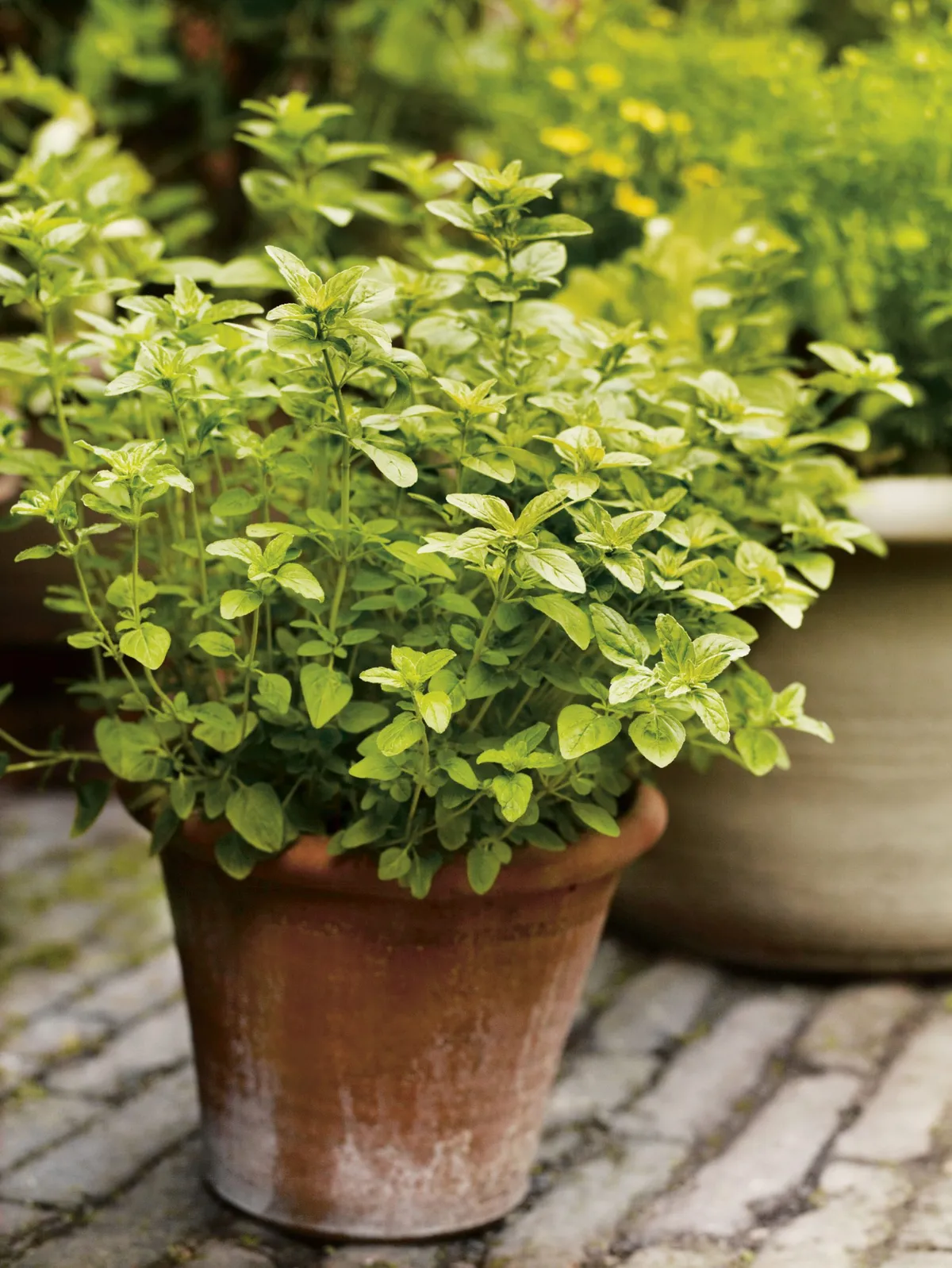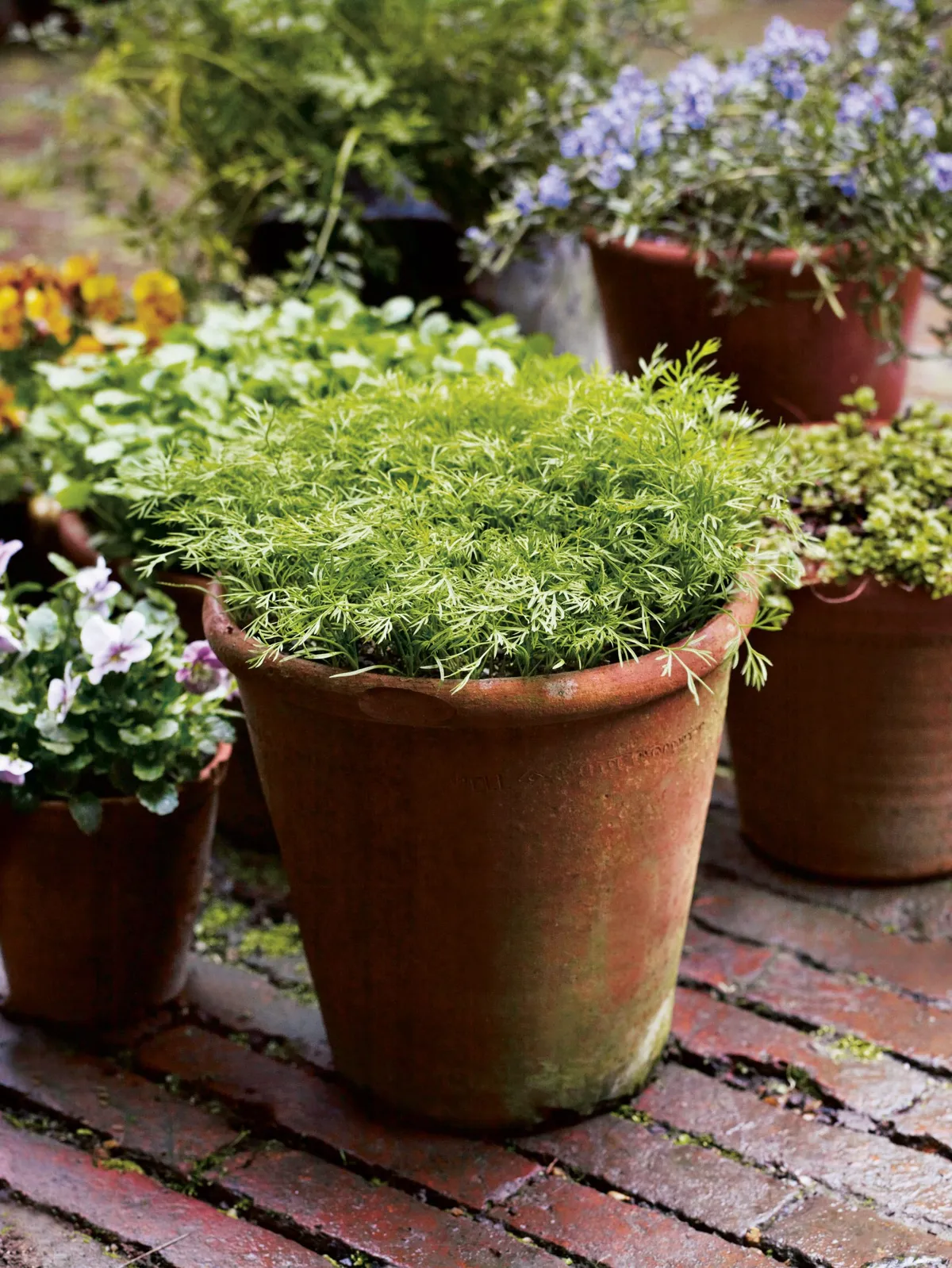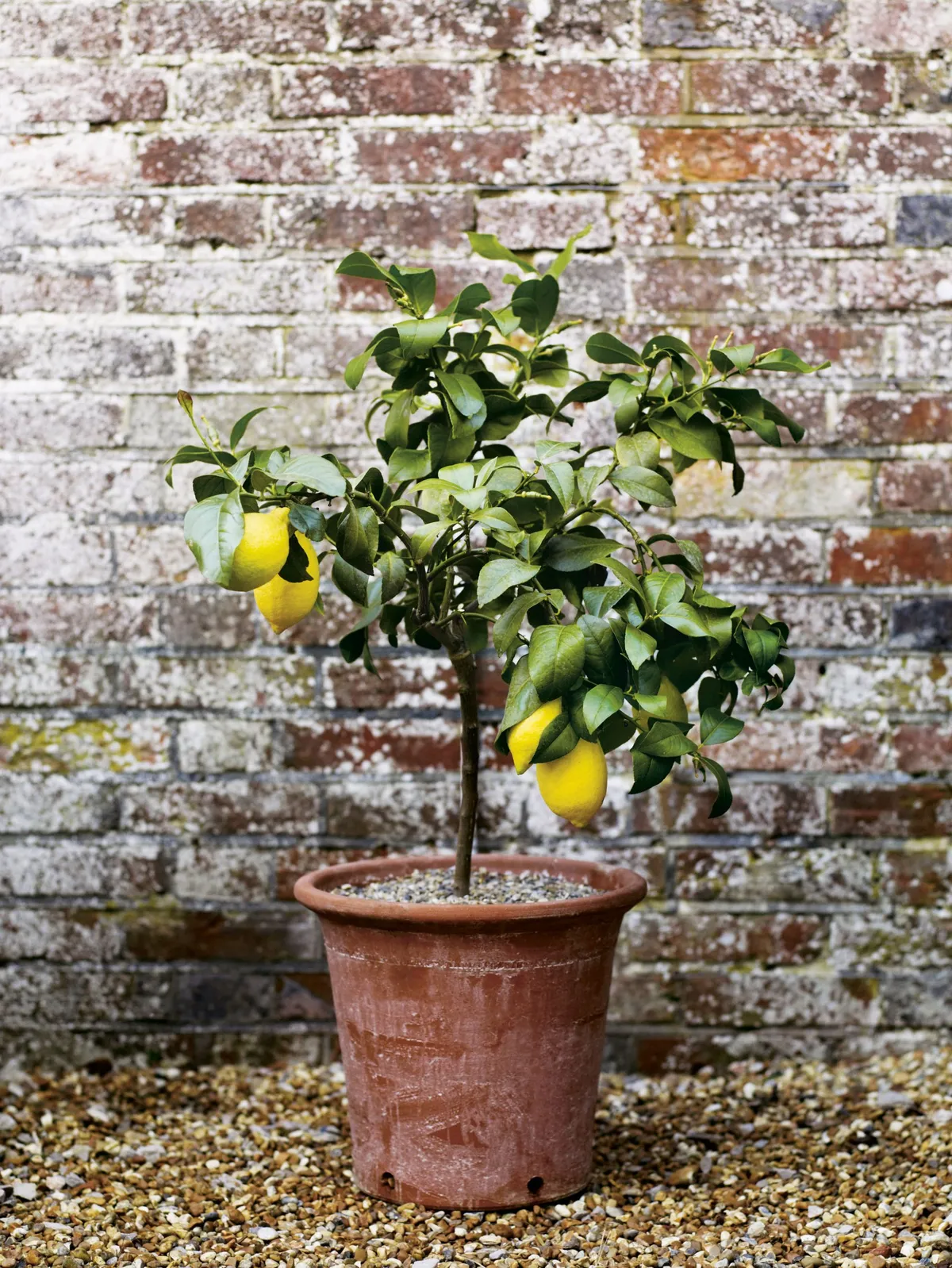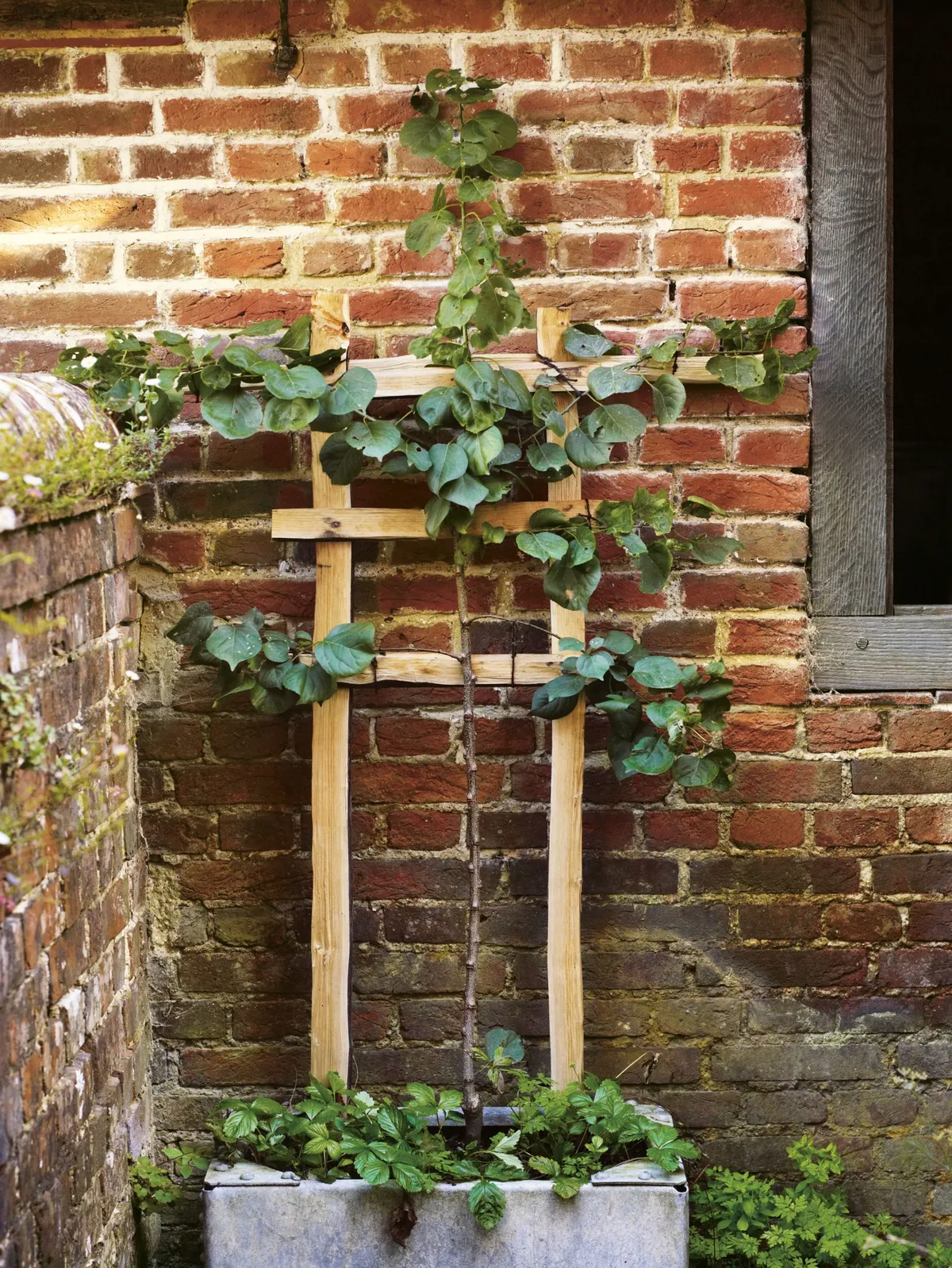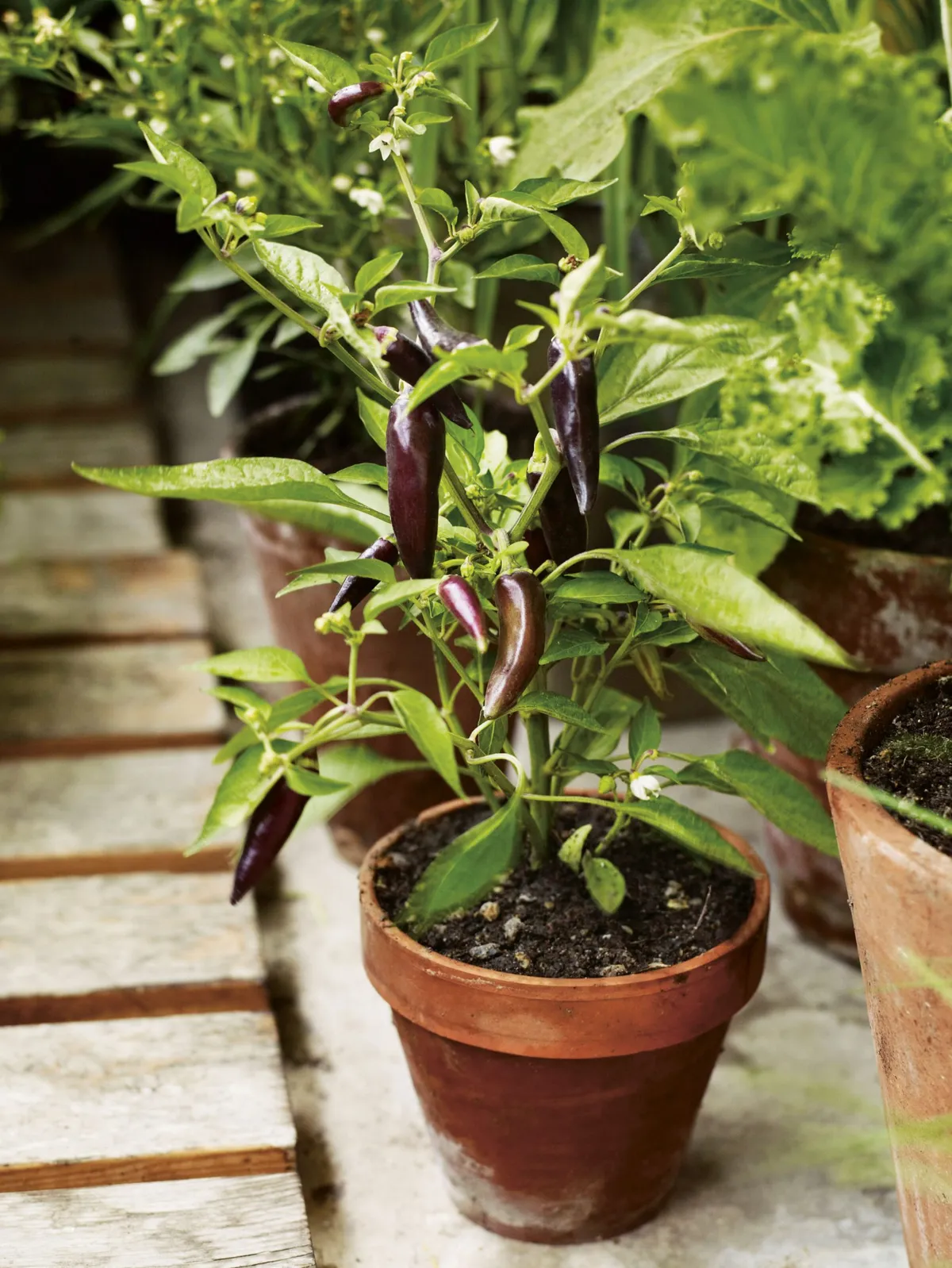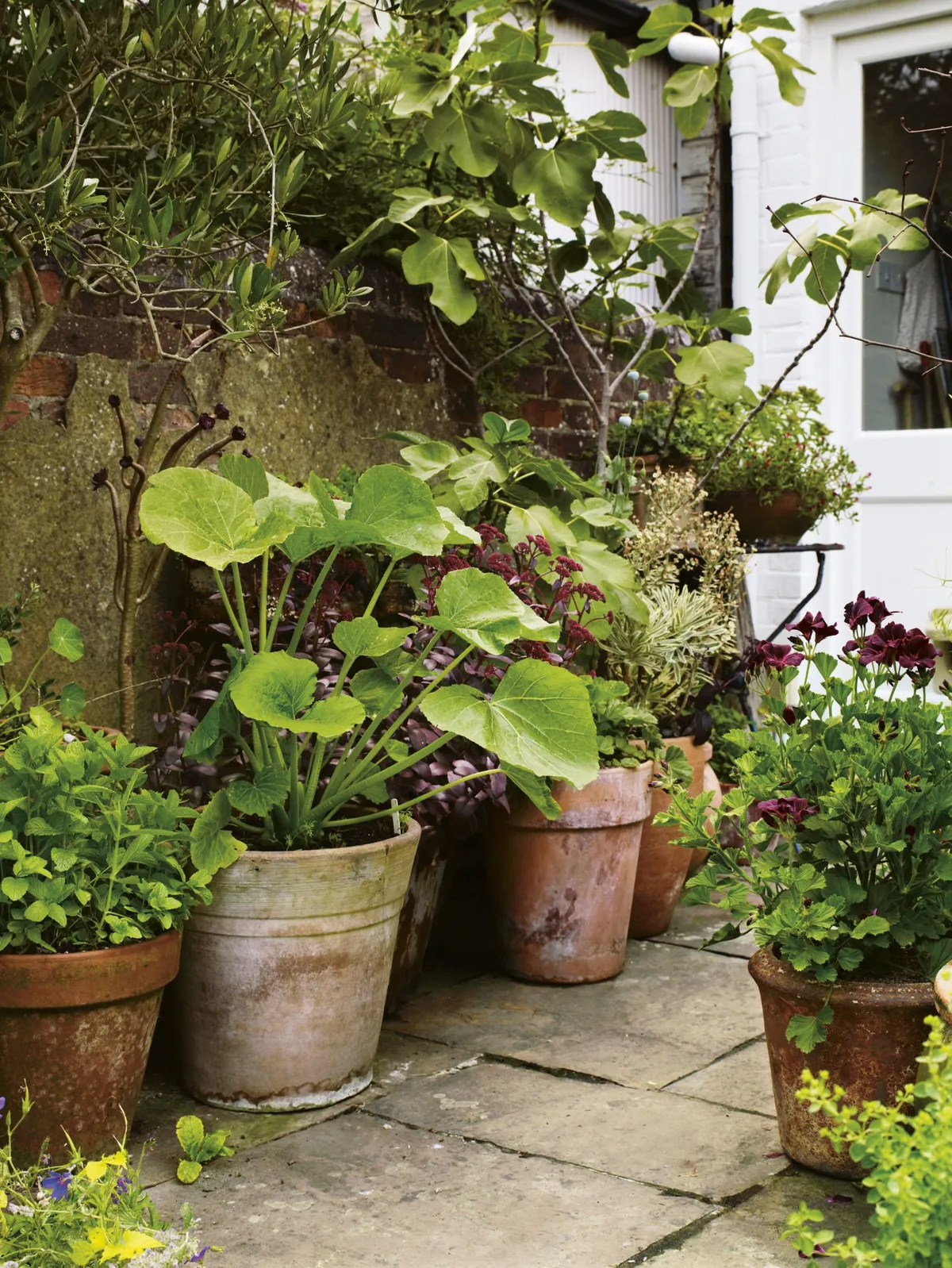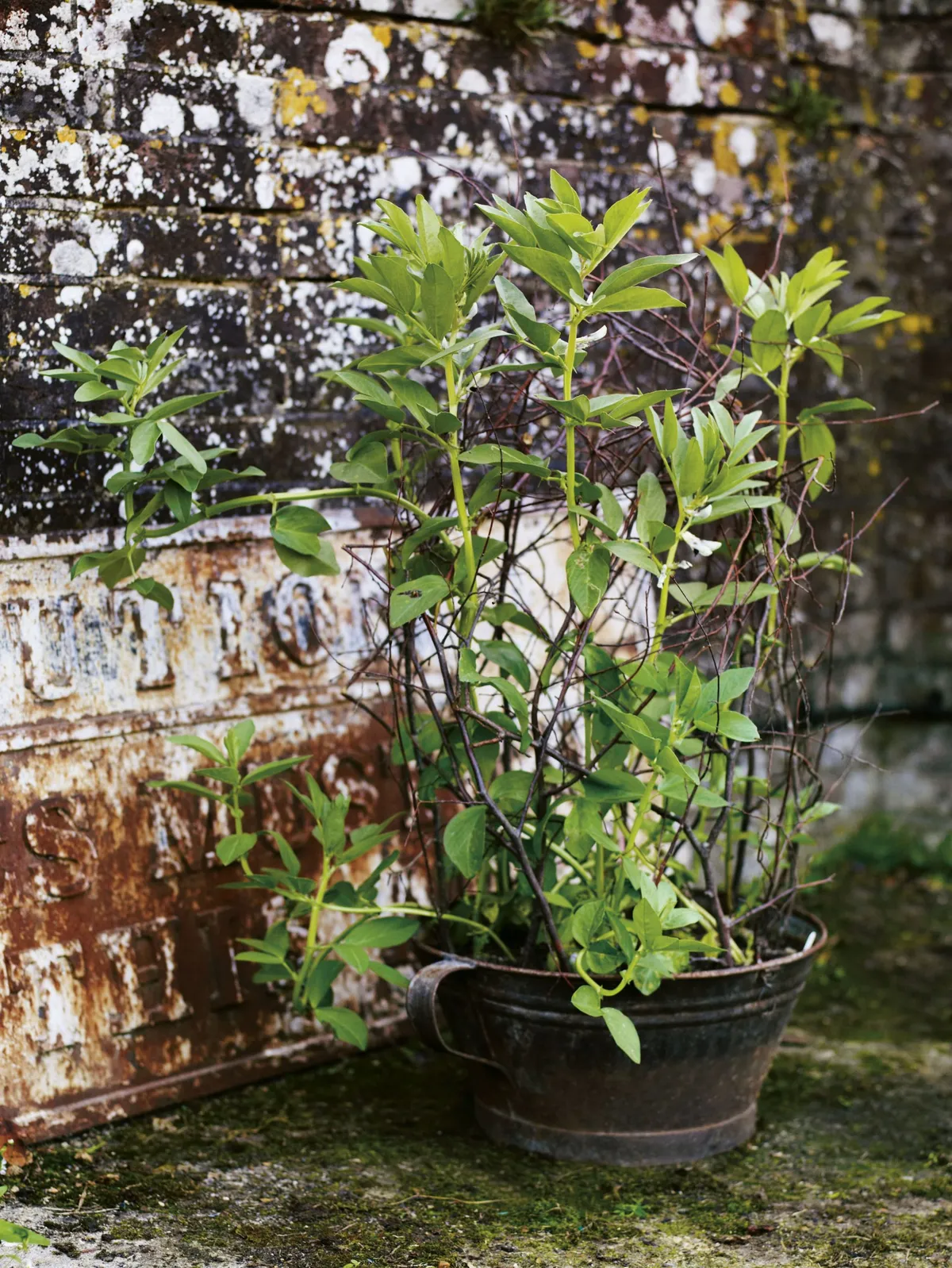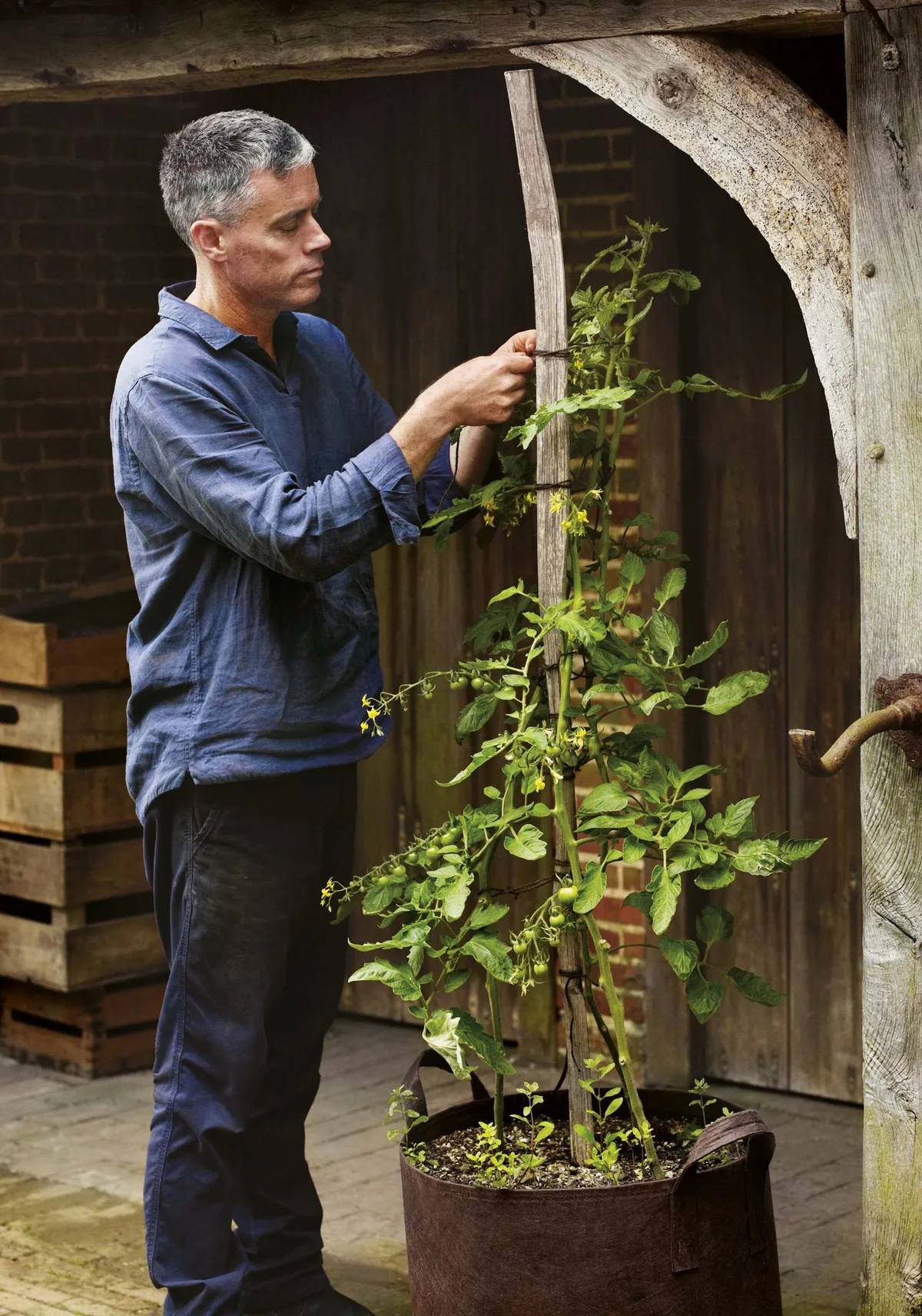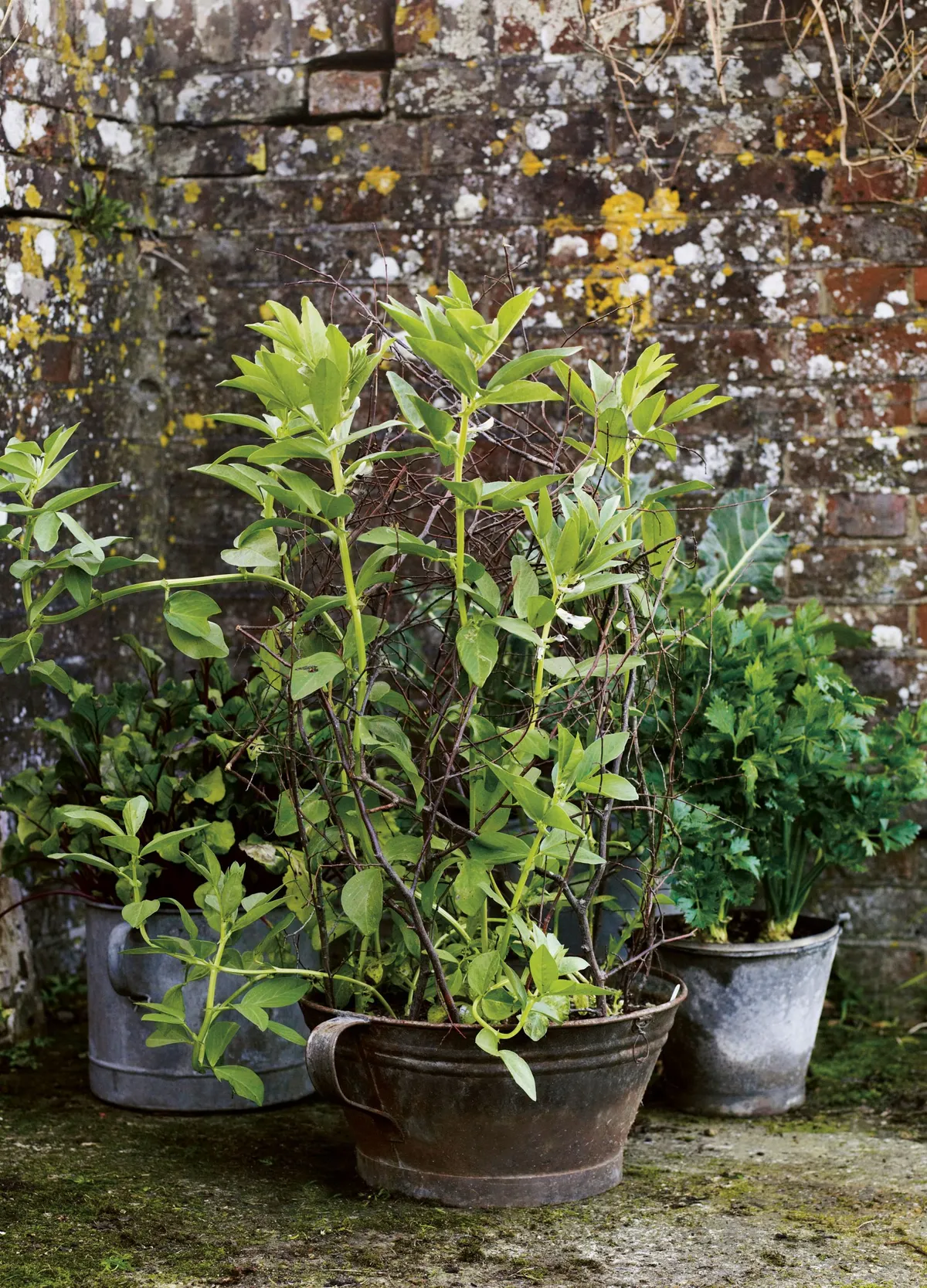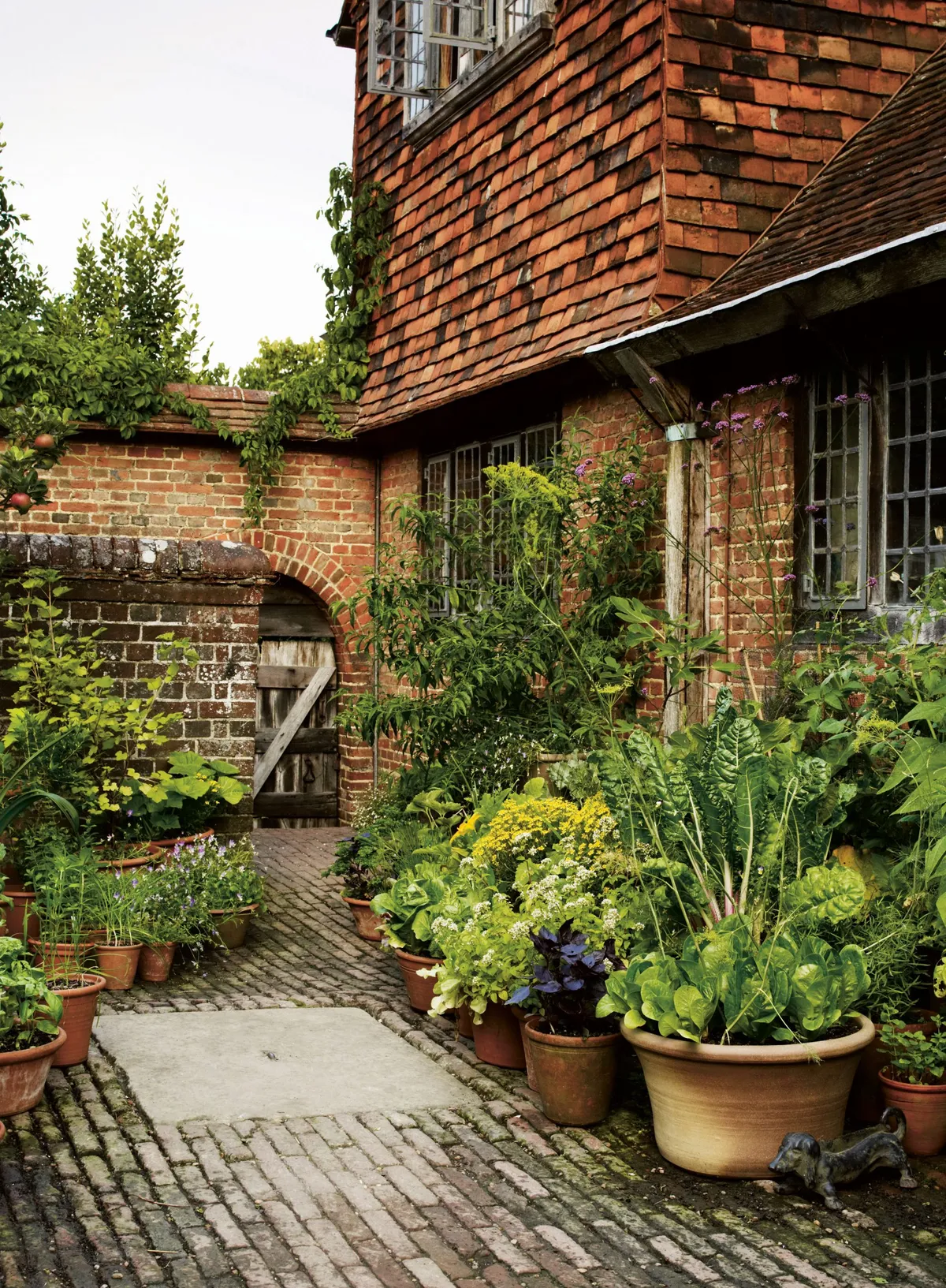Expert grower and gardener chef Aaron Bertelsen explains how easy it is to grow vegetables in pots, which means great vegetable crops even for those who are short on space.
How to grow vegetables in pots
Which vegetables can be grown in pots?
The short answer to this question is, anything you like. From delicate, leafy herbs to root vegetables and sturdy fruit trees, there should be no reason why – given a little thought, forward planning and, of course, some tender loving care – you can’t create a varied, productive container garden, whatever the space and the conditions you are working in.
The best vegetables to grow in pots
If I could grow only one type of thing in my container garden, it would be salad leaves. This also happens to be what I would recommend new gardeners to start with. Salad leaves are easy to grow, make good use of space and generally taste much better than what you can buy in the shops. A couple of 30cm pots of cut-and-come again leaves will give you flavoursome fresh salads for weeks, if not months. I’m convinced home-grown salad leaves are more nutritious, and they also look beautiful. Choose carefully and you will have a planter full of textures and colours to bring you pleasure throughout the year.
What other vegetables work well in pots?
Other stars of the kitchen container garden include stalwarts, such as chard and kale, which will keep you in fresh greens all year round; structural plants, such as globe artichokes, that will anchor your display; and true show stoppers, such as peas and the gloriously varied sea kale. You will find that many of them offer tremendous value too. Some, such as chard, will just keep on growing, while others offer several crops for the price of one: think of peas, with their shoots, flowers and juvenile pods, or the delectable tops of broad beans.
Can you grow carrots in pots?
Root vegetables may not seem like the most obvious candidates for a container garden, but they can do very well in a confined space, and, of course, you can control the growing conditions in a pot far more easily than in a garden. They are also surprisingly generous crops to grow: a pot of beetroot will give you handfuls of delicious leaves as well as the roots themselves. Root vegetables are well worth growing for aesthetic reasons too: the bright green, frothy foliage of a carrot is a great foil for the dramatic, deep red of beetroot leaves, while parsnips are so good looking that we actually grow them as flowers in the ornamental garden at Great Dixter.
Growing fruit trees in pots?
Think about growing fruit trees, and the first thing that comes to mind is that you will probably need an orchard, or at the very least a generous kitchen garden. Think again. These days there are so many dwarf forms of fruit trees especially bred to thrive in pots – and produce full-size fruit – that there really is no reason not to grow your own. Indeed, having limited space can actually work to your advantage – walls, provided they get plenty of sun, will reflect heat and speed up ripening, particularly of more exotic crops, such as figs, apricots and peaches. But even if a tree feels too ambitious, you can still share the joy. A blueberry bush in a pot will yield handfuls of sun-warmed berries, while delicate, violet-flavoured Alpine strawberries don’t even need a pot of their own – they will happily grow in the spaces around other crops, or even in the cracks between paving slabs.
Growing herbs in pots
Herbs are generally very well suited to growing in pots. Herb pots take up relatively little space – although do avoid using containers that are too small – and give so much in return. A few fresh herbs will transform your cooking. To my mind, edible flowers are the icing on the cake of the container garden; even just a few flowers will make it sing with their colour and scent. And they will attract pollinators too, helping to make the rest of your garden more productive.
The best vegetables to grow in pots
Chillies

Incredibly easy to grow. This is a Mediterranean crop and used to tough conditions. Just give the plants some sun, and possibly a small stake for extra support if they are in a windy spot. Use a good soil-based compost, and you won’t need to feed them.
Lemons
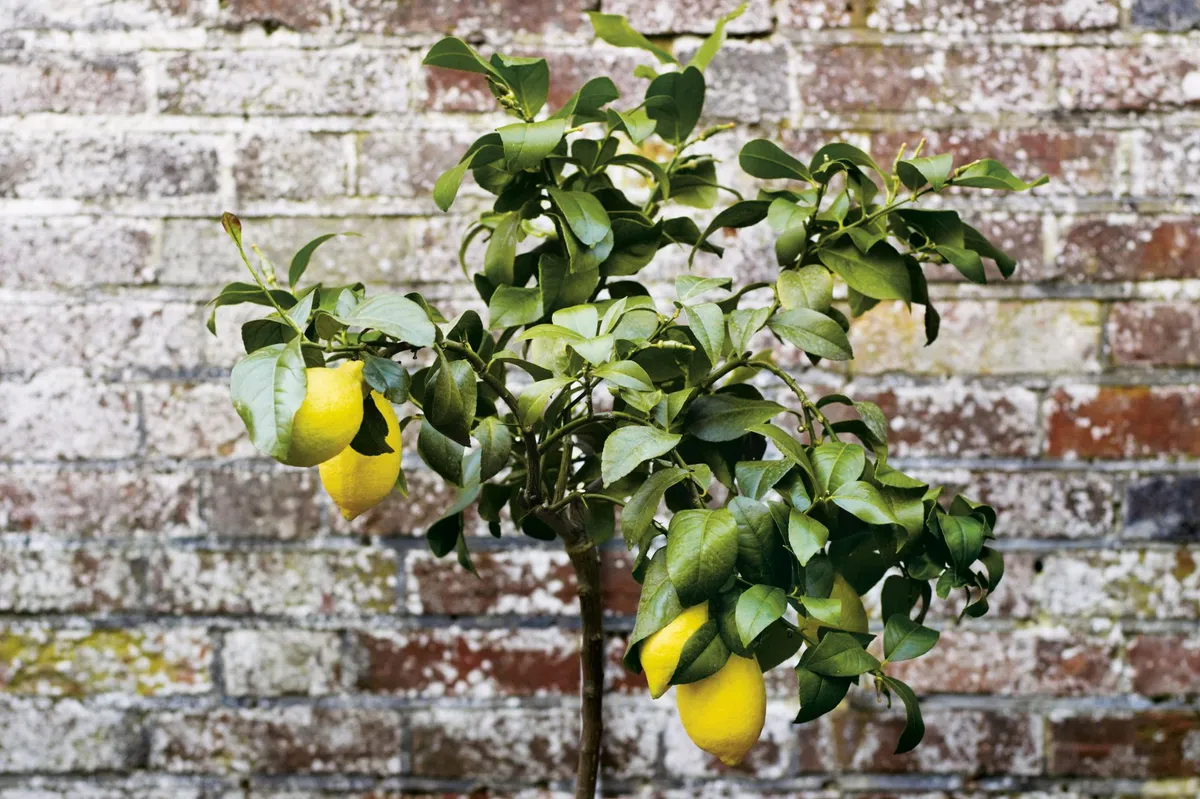
These are hungry plants, so make sure you use a good, soil-based compost, adding some grit or sharp sand to improve drainage. Needs protection from frost.
Dill
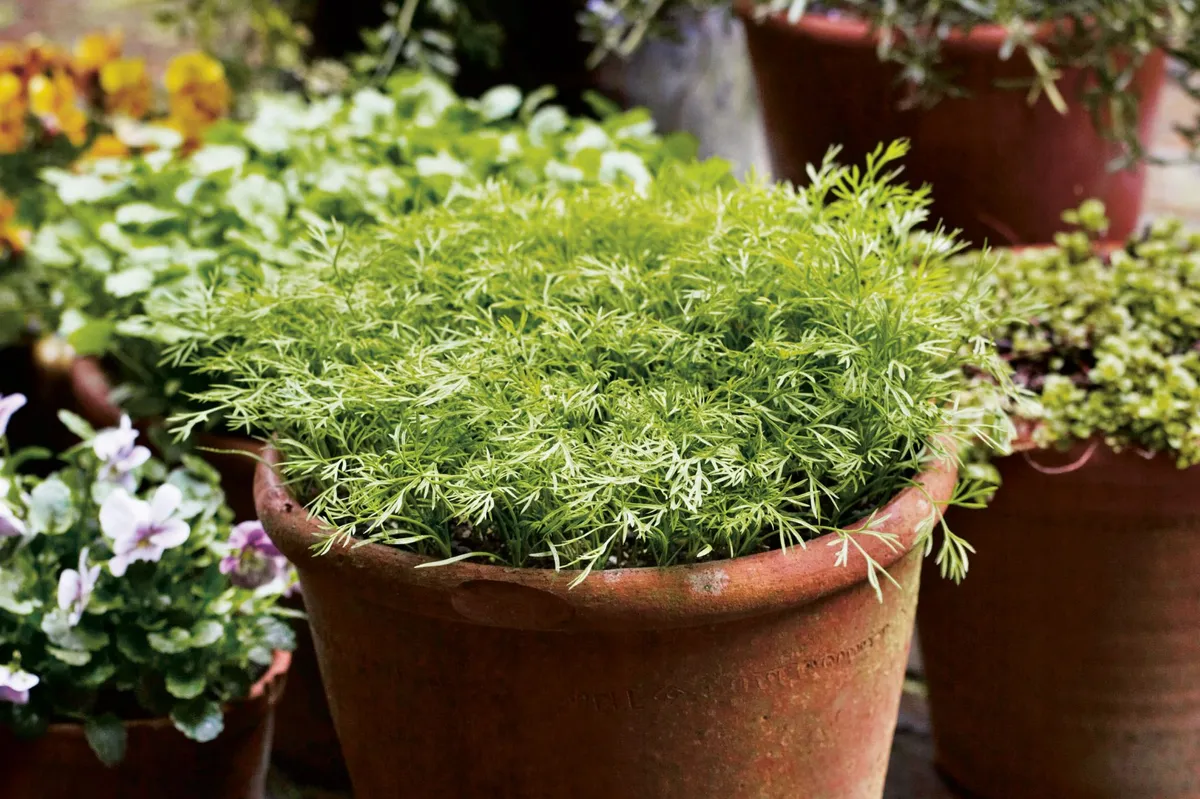
I grow dill both for its leaves and its seeds. Does best from direct sowing, as it does not like its roots disturbed. It will thrive in a pot, provided you water every couple of days and don’t let it dry out. For a good crop of decent-size seeds, I like ‘Mammoth’.
Kale

Choose a generous pot, as this annual is a sturdy, long-lived vegetable, but not the thirstiest of crops; a good soaking twice a week will be enough. My top three cultivars for flavour and colour would have to be ‘Redbor’, ‘White Russian’ and ‘Red Russian’.
Peach

Fan-training against a wall is the better way to go because of the additional heat reflected back to help ripen the fruit. All you will need is a warm wall, plenty of sun and a large pot, around 45-50cm in diameter. Water once a week, or every three to four days in hot weather, soaking the pot thoroughly. ‘Garden Lady’ is a slow-growing cultivar ideal for pots.
Butternut squash

Choose cultivars suited to growing well in pots – I’ve grown both ‘Barbara’ and ‘Butterbush’. Sow this annual crop early in pots on a warm windowsill with the aim of having good-sized plants ready to go out as soon as the frosts are over. Your squash in a pot will need regular watering, as well as feeding, and will benefit from a good rich soil.
Bay
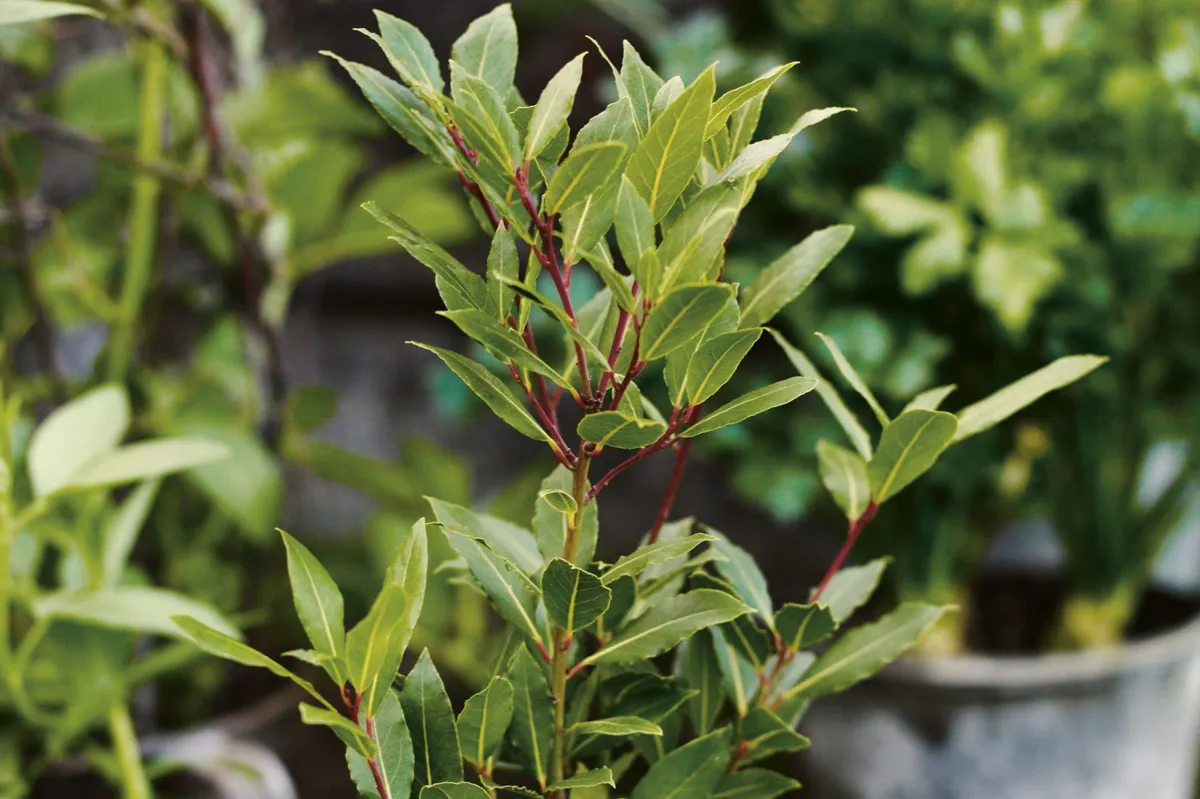
A great choice for adding structure to your container garden all year round. Very easy to look after, provided you give it a good sunny spot and feed it regularly. Prune every spring, both to keep it at the size you want it and to reduce any congestion.
Tarragon
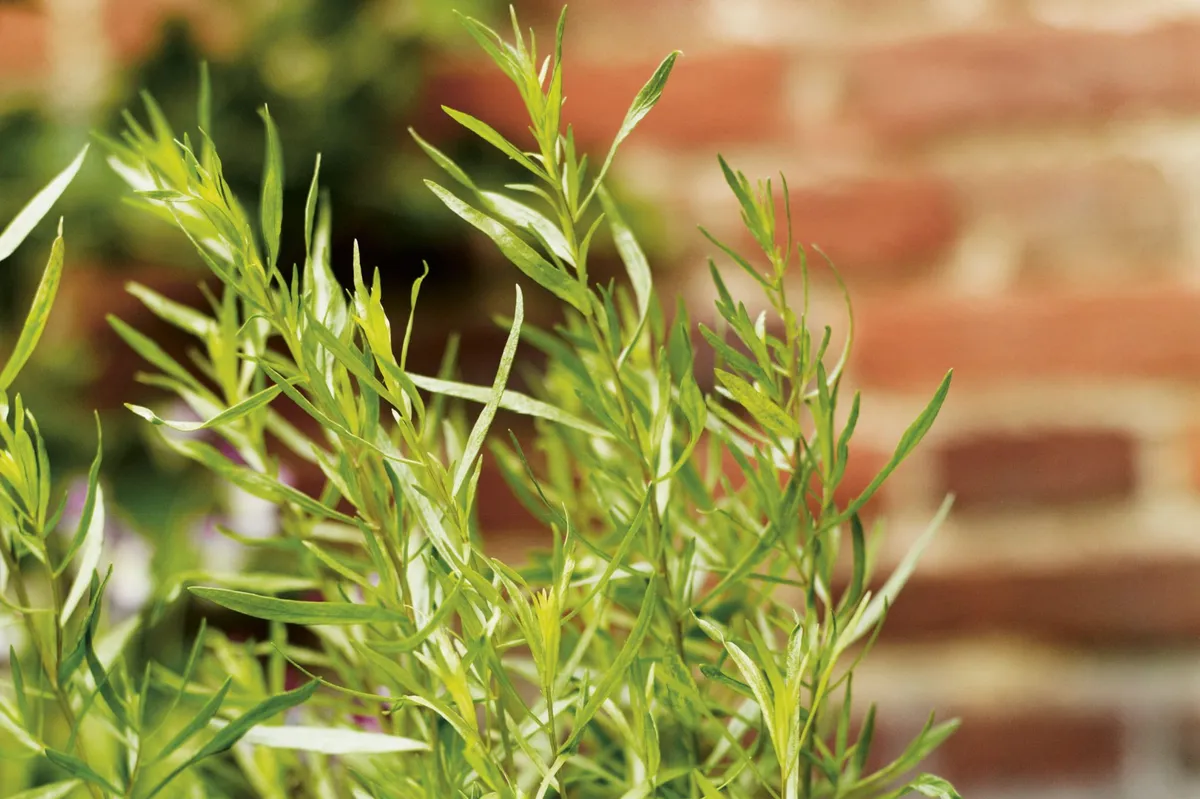
A perennial, but it will need some protection through the winter. There is only one species to grow, Artemisia dracunculus or French tarragon. Avoid Russian tarragon (Artemisia dracunculoides). It may grow faster, but it is tough and lacking in flavour. French tarragon does not set viable seed, so if you are starting from scratch, buy a plant and pot it up in early spring.
Fig
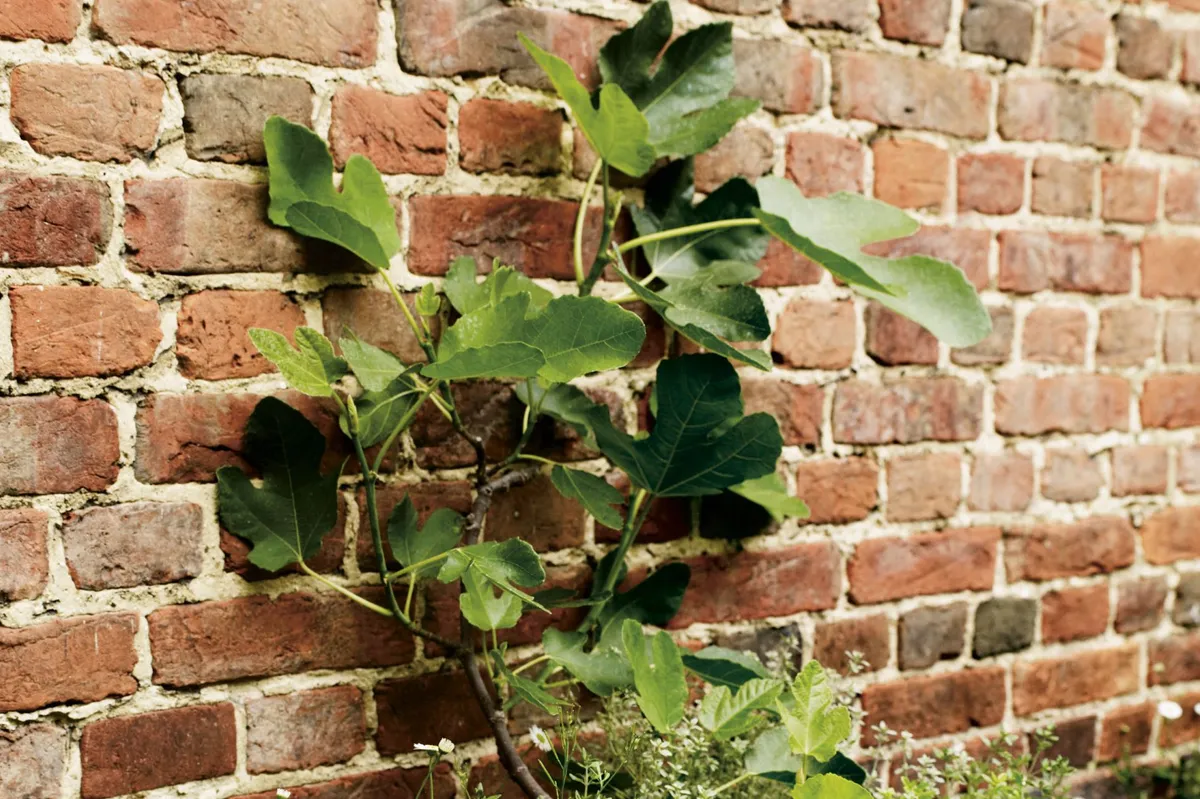
Easy to train as a fan against the wall, and does not demand much. I fork in a bit of blood, fish and bone meal in spring and try to give the pot a good soaking once a week.
Oregano
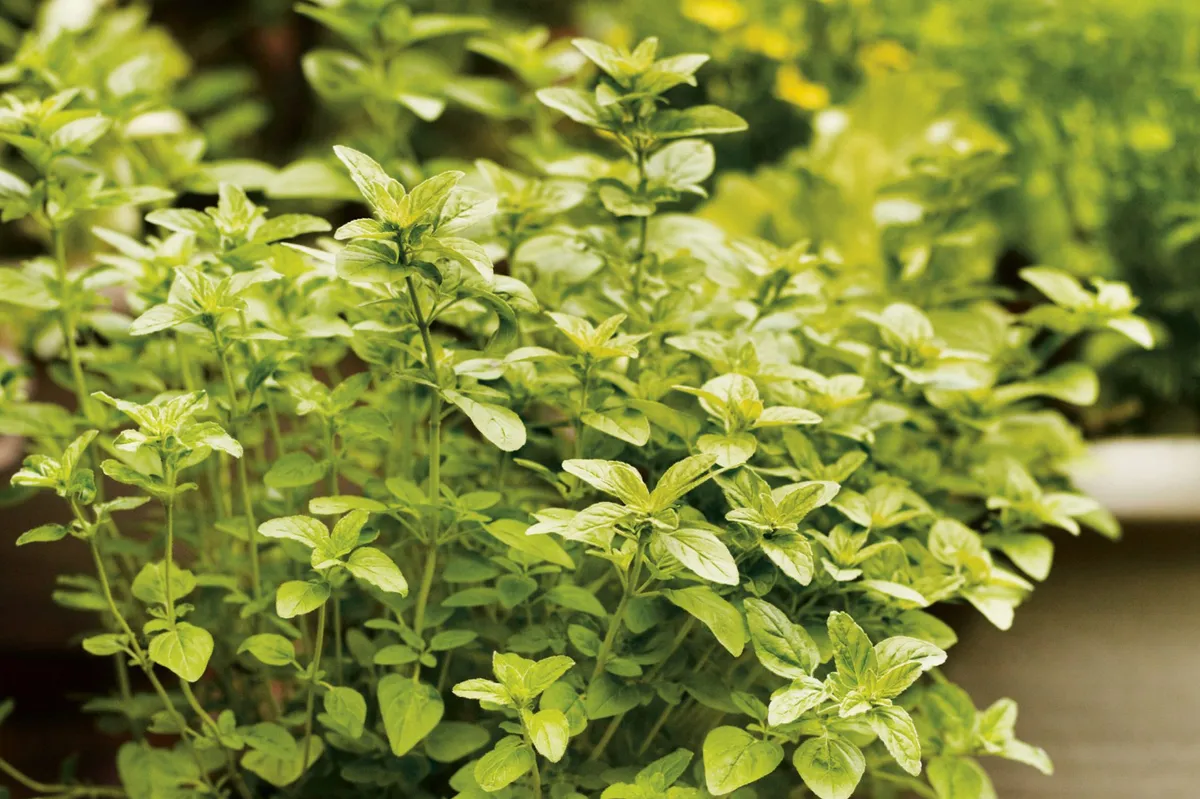
Buy plants rather than trying to grow from seed, and add some sand or grit when potting up. Give the plants as much sun as possible to maximise the flavour.
Apricot
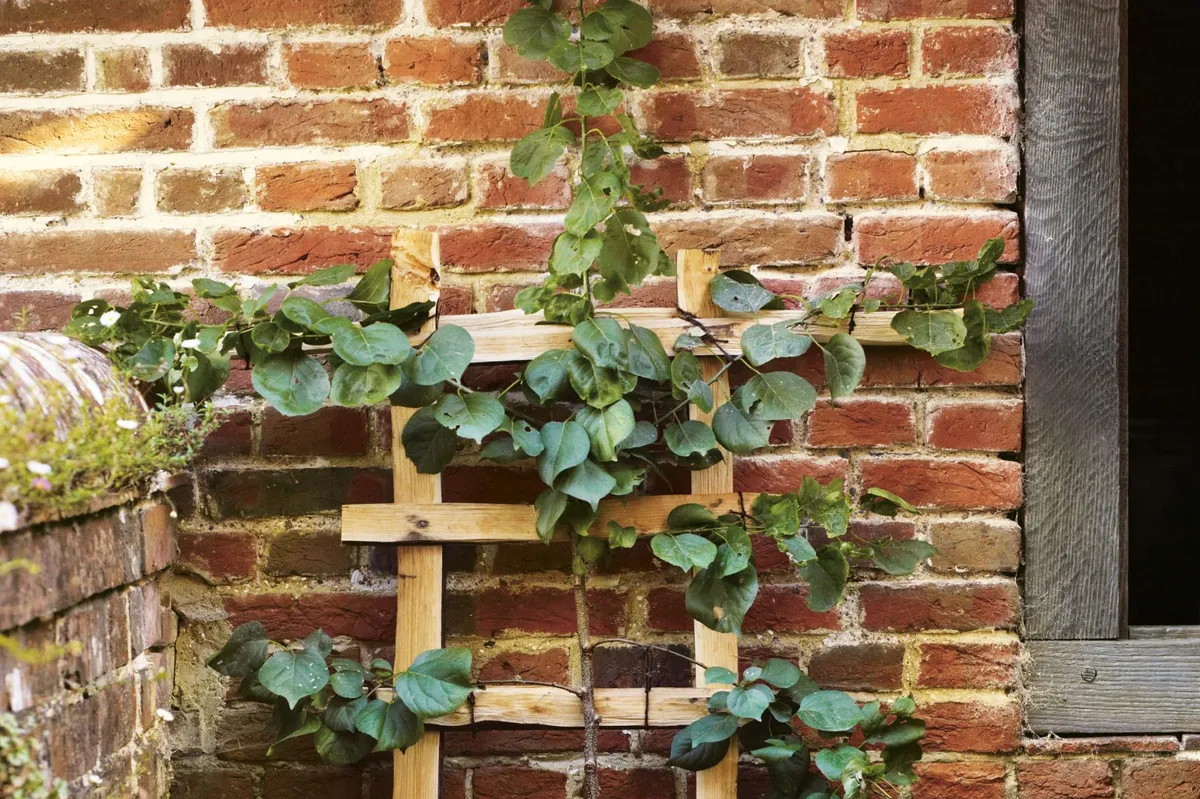
Make sure your tree is grafted on to dwarfing rootstock and that it is self-pollinating. Plant it straight into its ‘forever’ pot, which should be 45-50cm in diameter. Give the plant a good soak once a week, or every three or four days if the weather is hot.
Broad bean
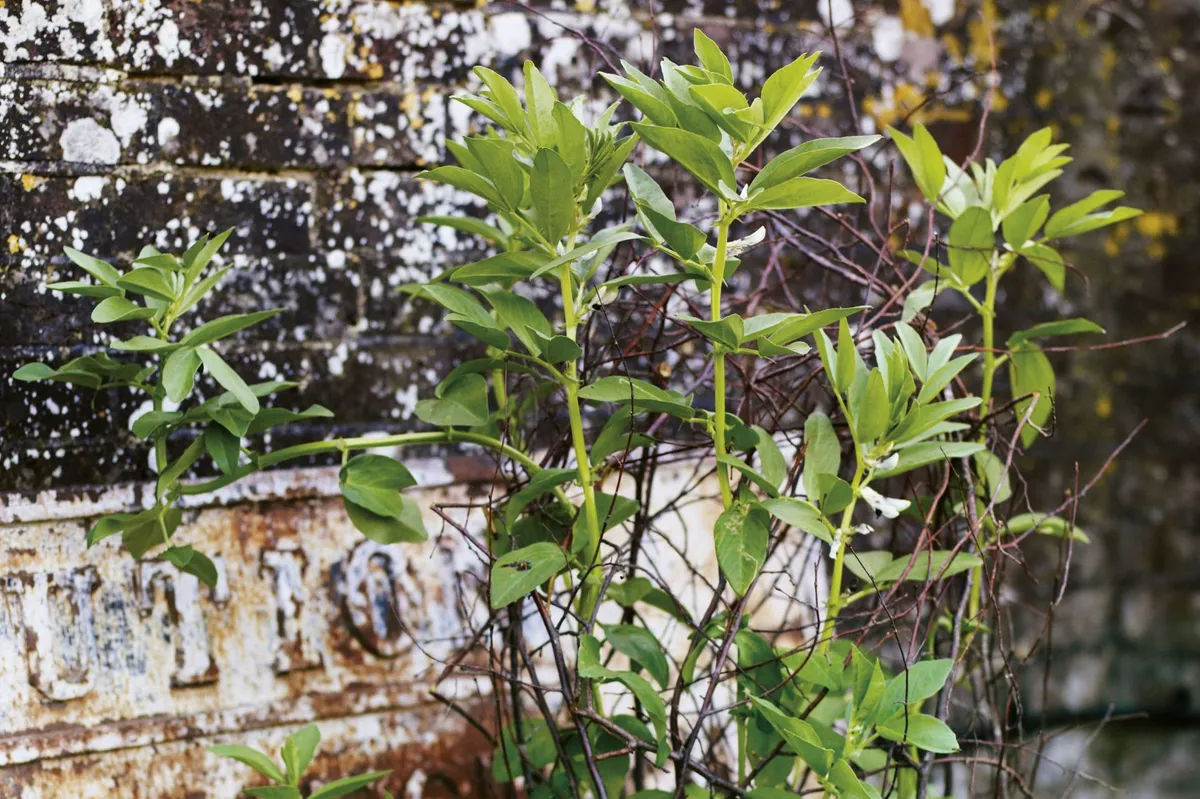
You will need a big pot to grow this annual crop. My current favourite cultivar is ‘Crimson Flowered’, which has the most beautiful wine-red, scented flowers. It is also particularly well-suited to container growing because it’s a compact plant. Turn the page for advice on choosing containers
Choosing the right containers
Choosing containers for your plants is a very personal thing. At Great Dixter, the majority of our pots are terracotta. They sit well against the brick floor and walls of the courtyard, and they age gracefully. Aesthetics aside, though, more or less anything can be used to grow crops in as long as it has sides to hold the soil in place, and holes in the bottom to allow for drainage.
The one thing that is critical about your chosen pots is size. Small pots can look very pretty clustered together and will enable you to create more variety in small spaces, such as steps and tabletops, as well as being easier to bring inside during the winter, but bear in mind that they will dry out very quickly.
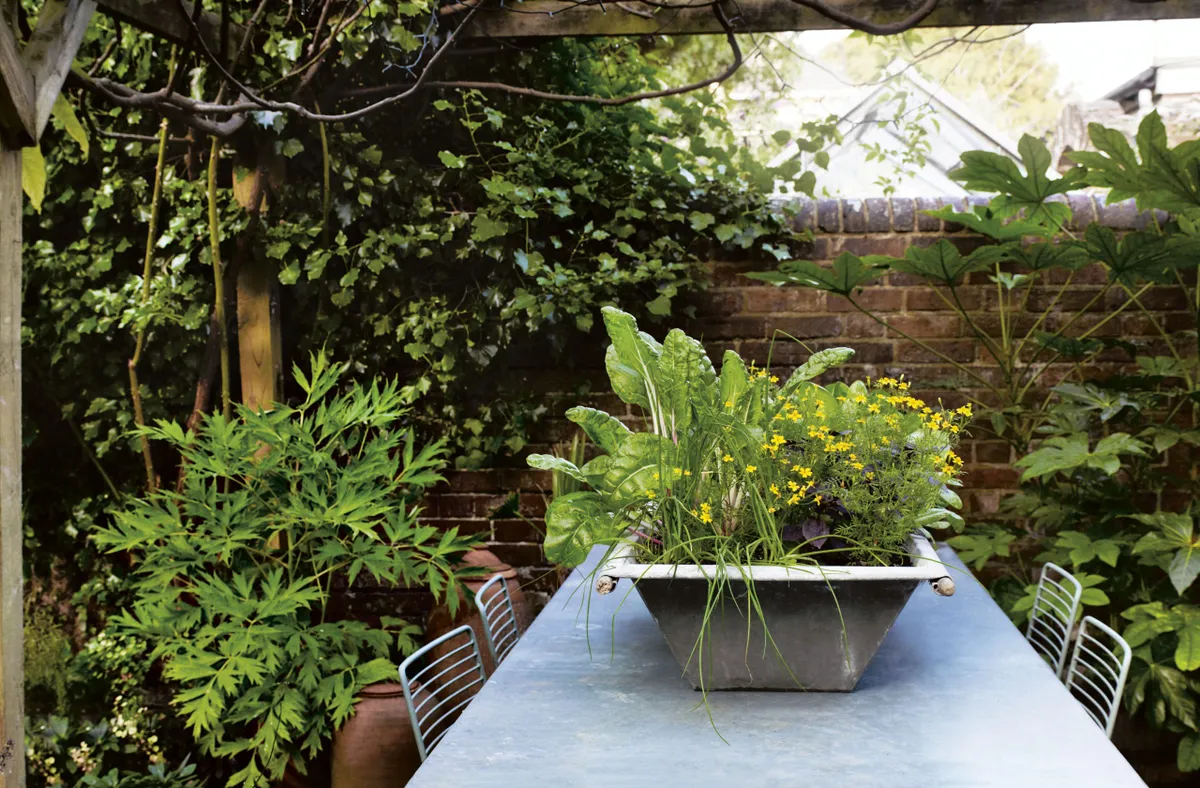
One large pot containing three or four different varieties of plant grown together will be much easier to maintain than multiple pots. Remember, you don’t need to fill the entire pot with compost – you can put a layer of something light and bulky, such as perlite, at the bottom, then put your soil on top of that.
The shape of pot you choose depends on what you plan to grow in it. For salad leaves or herbs, which have shallow roots, choose a broad, shallow pan. So-called ‘long Tom’ pots are best used for plants with deeper roots and/or trailing foliage, such as carrots, parsnips, nasturtiums, trailing rosemary, trailing thyme and trailing cherry tomatoes.

If you want to grow a fruit tree, choose the biggest pot you can accommodate. This will allow your tree plenty of room to expand, and you can grow other crops around the edge of the pot. Provided you are diligent about feeding and top-dressing, your tree will need repotting only once every four or five years, rather than every spring. When you are just starting out, keep things simple. A single trough
with sorrel, some cut-and-come-again salad leaves, and a few of your favourite herbs will be easy to look after and give much pleasure. Add a few edible flowers to the mix and you will have something that’s really beautiful to look at.
